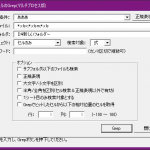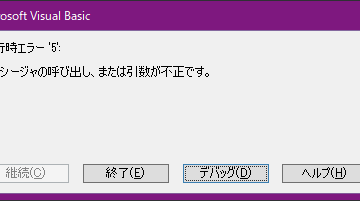今の言語は必ずIterator(For Each)があってとても簡単にループが作成できて便利なのだが、For Each を使って集計処理をすると以下のようなロジックになる場合が多い。
For Each を使用した集計処理
Dim col As Collection
Dim v As Variant
Dim strWork As String
Dim lngCnt As Long
Set col = New Collection
col.Add "あ"
col.Add "い"
col.Add "い"
col.Add "う"
col.Add "え"
col.Add "え"
col.Add "お"
col.Add "お"
strWork = ""
lngCnt = 0
For Each v In col
If v <> strWork Then
'初回
If strWork <> "" Then
Debug.Print strWork & lngCnt
End If
strWork = v
lngCnt = 0
End If
lngCnt = lngCnt + 1
Next
'集計結果を表示する前にループを抜けてしまう。
If v <> strWork Then
Debug.Print strWork & lngCnt
End If
結果
あ1 い2 う1 え2 お2
結果はもちろん合ってはいるのだけれど、初期化を行う場所や結果を表示する場所が2重になってしまっている。こんなことやっているとちょっと格好が悪い。昔(CobolやVBの時代)はこんなことはなかったはずだが、Iteratorを使うとこうなってしまうのは仕方がないなとは思う。
かといって、コレクションをカーソル風に読むのはわりと面倒。というわけで、コレクションを カーソル風に読むクラスを作成してみた。
カーソル風コレクション読み込みクラス
'------------------------------------------------------
' カーソル風コレクション読み込みクラス
'------------------------------------------------------
Option Explicit
Private mCol As Collection
Private mIndex As Long
Private Sub Class_Initialize()
mIndex = 0
End Sub
Private Sub Class_Terminate()
Set mCol = Nothing
End Sub
'------------------------------------------------------
' コンストラクタ
'------------------------------------------------------
Public Sub Init(col As Collection)
Set mCol = col
Me.MoveFirst
End Sub
'------------------------------------------------------
' 終了判定
'------------------------------------------------------
Property Get Eof() As Boolean
If mCol Is Nothing Then
Eof = True
Exit Sub
End If
Eof = mCol.Count < mIndex
End Property
'------------------------------------------------------
' 最初の行に移動
'------------------------------------------------------
Public Sub MoveFirst()
mIndex = 1
End Sub
'------------------------------------------------------
' 次行取得
'------------------------------------------------------
Public Sub MoveNext()
mIndex = mIndex + 1
End Sub
'------------------------------------------------------
' セル取得
'------------------------------------------------------
Public Property Get item() As Variant
If Me.Eof Then
'EOF後は最後の値を返す
If IsObject(mCol(mCol.Count)) Then
Set item = mCol(mCol.Count)
Else
item = mCol(mCol.Count)
End If
Else
If IsObject(mCol(mIndex)) Then
Set item = mCol(mIndex)
Else
item = mCol(mIndex)
End If
End If
End Property
MoveNext を用いた集計処理
上記のクラスを使えば、記述内容がすっきりする。
Dim col As Collection
Dim v As Variant
Dim strWork As String
Dim lngCnt As Long
Set col = New Collection
col.Add "あ"
col.Add "い"
col.Add "い"
col.Add "う"
col.Add "え"
col.Add "え"
col.Add "お"
col.Add "お"
Dim cc As CollectionCursor
Set cc = New CollectionCursor
cc.Init col
Do Until cc.Eof
'初期化
strWork = cc.item
lngCnt = 0
'集計処理
Do Until cc.Eof Or strWork <> cc.item
lngCnt = lngCnt + 1
cc.MoveNext
Loop
'集計結果
Debug.Print strWork & lngCnt
Loop
あ1 い2 う1 え2 お2
見てわかる通り、初期化を行う場所、集計する場所、修正結果を表示する場所が一目瞭然であると思う。ループの中で次のコレクションに移動できないとこういったロジックを書くことができない。










最近のコメント